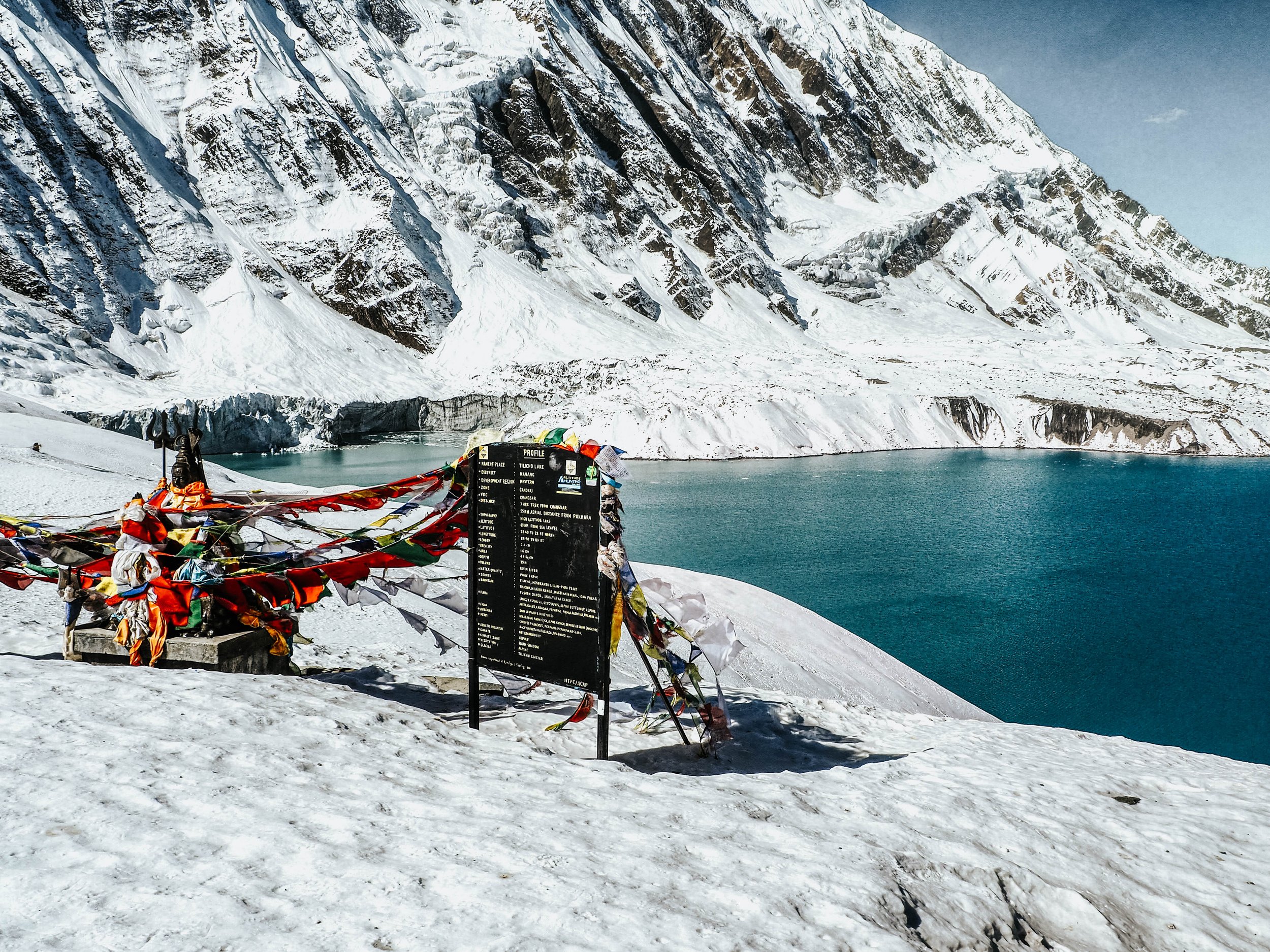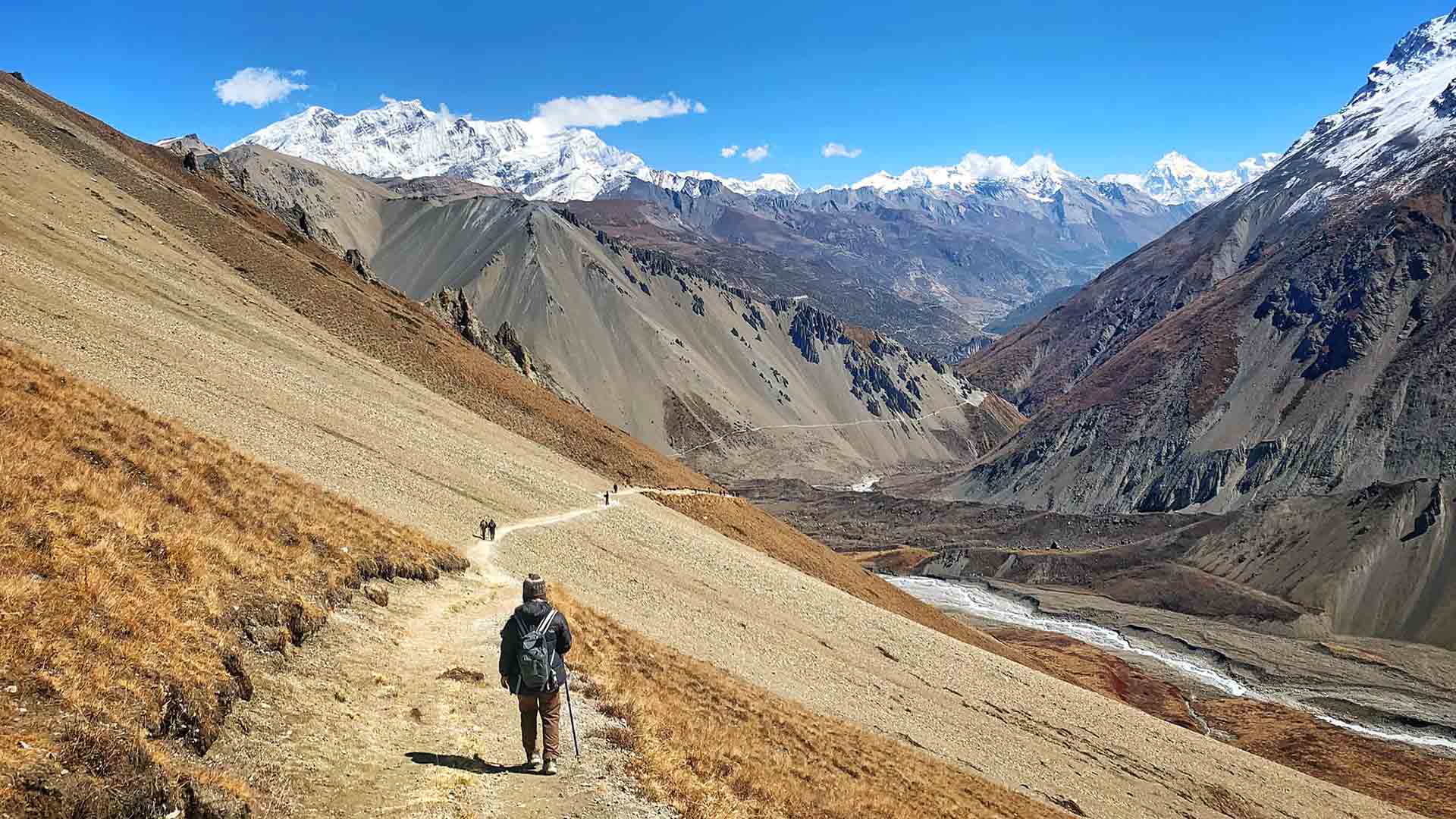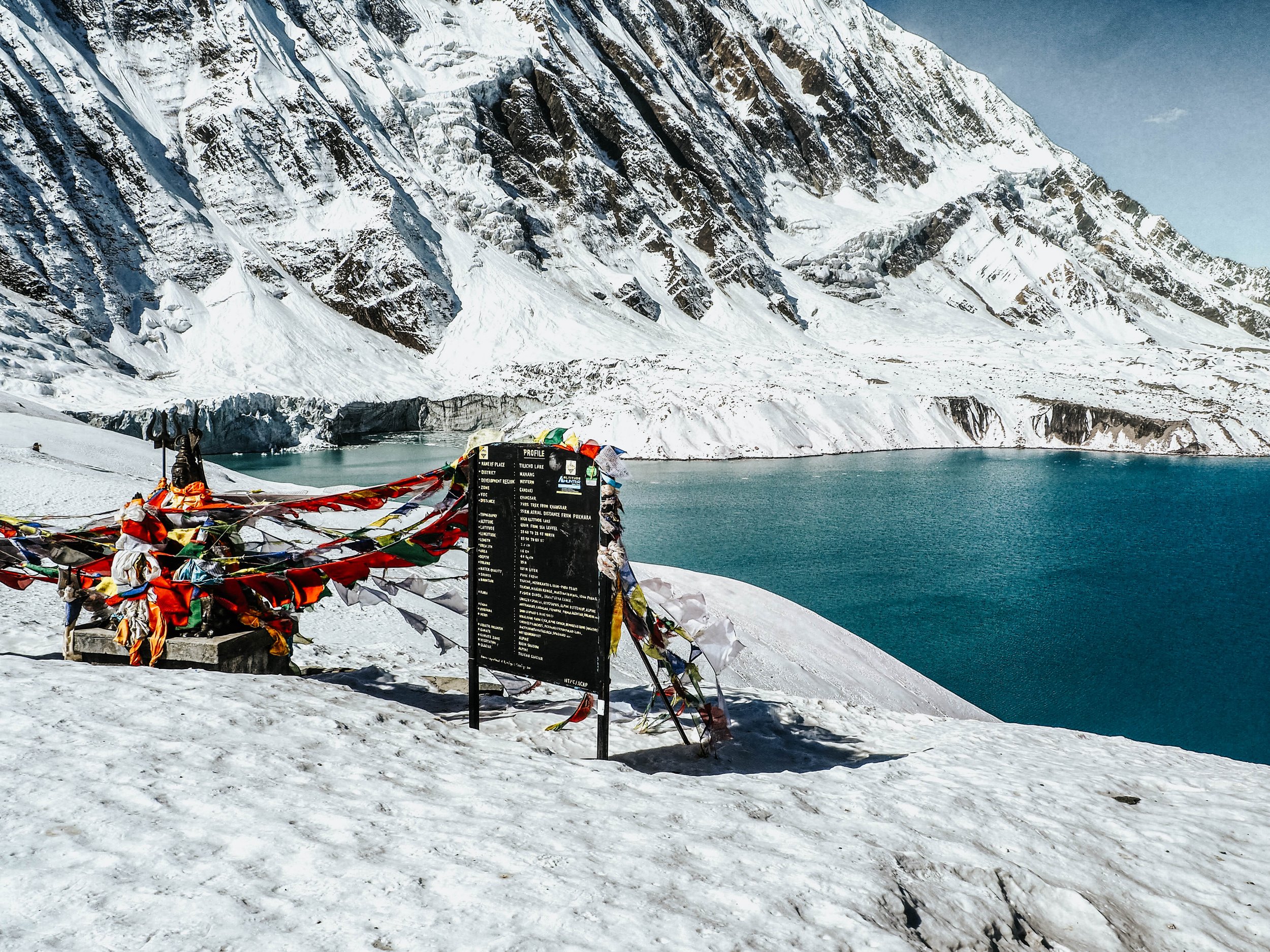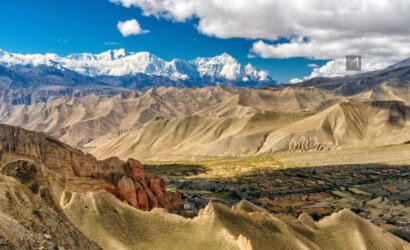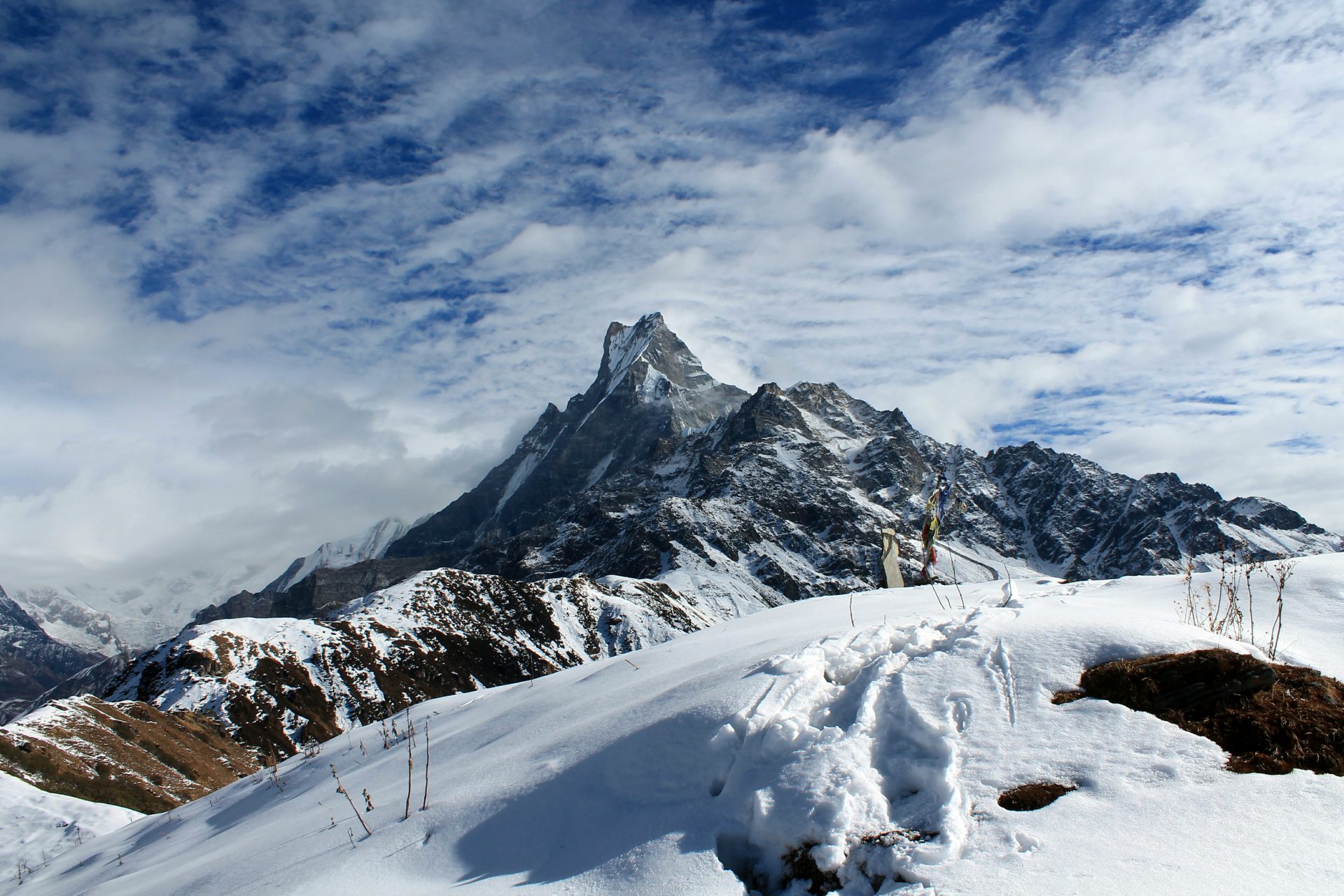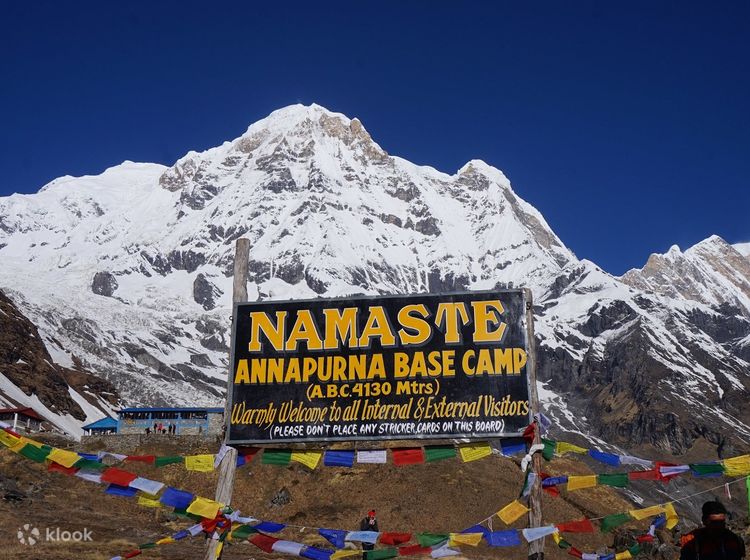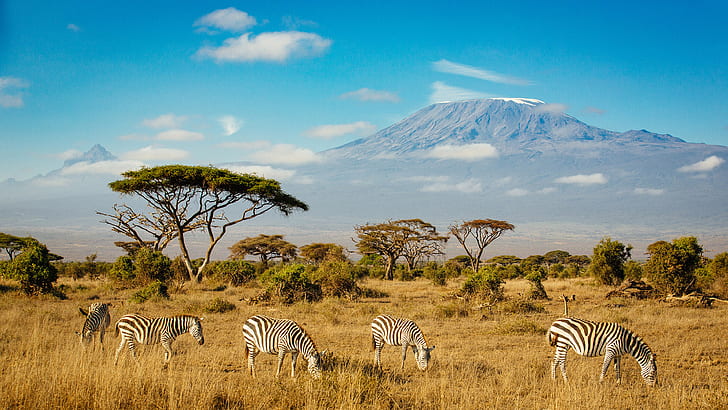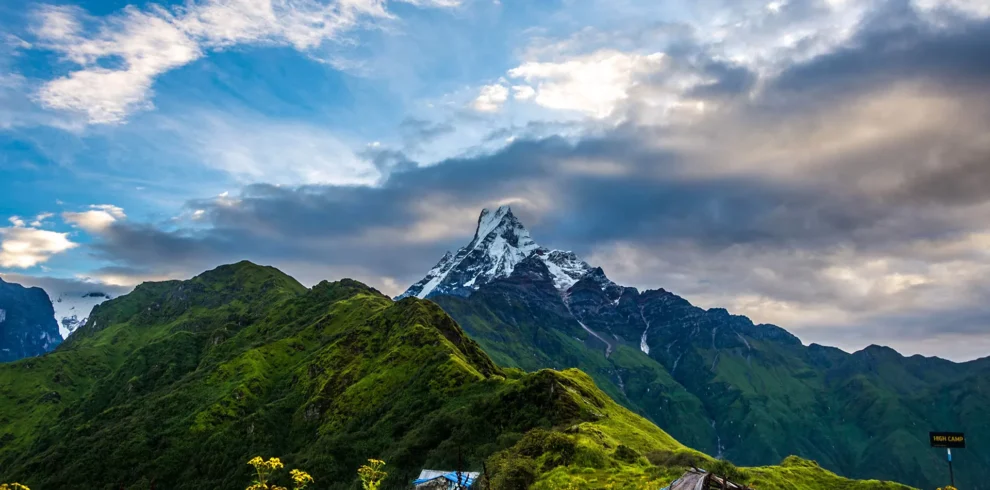-
Kathmandu
-
Bus , Car , Airlines
-
4,949 meters (16,237 feet) above sea level.
-
Adventure.
-
March to May , September to November
-
Moderate
Overview
Tilicho Lake: A High-altitude Gem in the Annapurna Region
Nestled amidst the majestic peaks of the Annapurna range in the Himalayas, Tilicho Lake stands as a breathtaking testament to nature’s grandeur and the allure of high-altitude landscapes. At an elevation of 4,919 meters (16,138 feet) above sea level, it holds the prestigious title of the world’s highest lake situated at such an altitude. Accessible through various trekking routes, Tilicho Lake is a jewel hidden within the folds of the Annapurna Circuit, captivating trekkers with its pristine beauty, turquoise waters, and the awe-inspiring backdrop of towering peaks.
Tilicho Lake is renowned not only for its altitude but also for the challenging yet rewarding trek it entails. Trekkers often embark on the journey from Besi Sahar, following the classic Annapurna Circuit trail that winds through diverse landscapes, from subtropical forests to alpine meadows. The trek takes adventurers through traditional villages, showcasing the rich cultural tapestry of the region inhabited by ethnic communities such as Gurungs and Manangis. Along the way, vibrant prayer flags flutter in the mountain breeze, adding a spiritual touch to the trekking experience.
One of the most popular routes to Tilicho Lake diverges from the main Annapurna Circuit trail near Manang. As trekkers ascend towards higher altitudes, the landscape transforms, revealing barren yet captivating terrains. The trail passes through Tilicho Base Camp before reaching the pristine lake, allowing ample time for acclimatization and ensuring a safe and enjoyable journey.
Upon reaching the shores of Tilicho Lake, trekkers are greeted by a surreal panorama. The turquoise waters of the lake reflect the surrounding peaks, including the formidable Tilicho Peak and the Annapurna massif. The snow-clad summits cast shimmering reflections on the lake’s surface, creating a mesmerizing spectacle that captivates the senses. The serenity of Tilicho Lake’s surroundings provides a stark contrast to the challenges faced during the trek, offering a peaceful retreat and a chance for introspection.
The region surrounding Tilicho Lake is not only a visual feast but also a haven for biodiversity. Trekkers may encounter elusive Himalayan wildlife, including the iconic blue sheep and various species of birds. The flora, adapted to the harsh mountain environment, includes hardy alpine plants and patches of colorful rhododendrons during the spring season.
While Tilicho Lake is a destination in its own right, many trekkers choose to extend their journey further, connecting with the main Annapurna Circuit or opting for the challenging trek to the Thorong La Pass, one of the world’s highest trekking passes at an elevation of 5,416 meters (17,769 feet). This extension adds an adventurous dimension to the trek, rewarding intrepid explorers with unparalleled views and a sense of accomplishment.
In conclusion, Tilicho Lake stands as a testament to the raw beauty and grandeur of the Himalayas. Its turquoise waters, nestled among towering peaks, provide a serene sanctuary for trekkers who brave the challenges of the Annapurna Circuit. The journey to Tilicho Lake is not just a trek; it’s an immersive experience that unfolds the wonders of nature, culture, and high-altitude adventure in the heart of the Himalayas.
Trip Highlights
- Marvel at the breathtaking Tilicho Lake, the world's highest lake at an altitude of 4,919 meters, set against the stunning backdrop of the Annapurna range.
- Embark on a captivating trek through the diverse landscapes of the Annapurna Circuit, passing through lush forests, traditional villages, and alpine meadows.
- Take in the beauty of Tilicho Base Camp, allowing for necessary acclimatization before the final ascent to Tilicho Lake, ensuring a safe and enjoyable trek.
- Encounter Himalayan wildlife, including blue sheep, and appreciate the hardy alpine flora adapted to the high-altitude environment.
- Connect with the main Annapurna Circuit or extend your journey for added adventure, exploring additional trails and experiencing the diverse landscapes of the region. Sense of Accomplishment:
Itinerary
Cost Includes
- Airport transfers.
- 4 night hotel in Kathmandu including breakfast.
- A day sightseeing tour in Kathmandu.
- Meals (breakfast, lunch & dinner) on trek.
- Accommodations in lodges on trek.
- A guide & porters (1 porter for each 2 trekkers and a porter carry about 20-22 KG from 2 of you).
- Paper works, National park entry permits, & TIMS permit.
- Flight fare Kathmandu - Lukla - Kathmandu with airport tax.
- Arrangement of emergency helicopter service which will be paid by your travel insurance company.
- Sleeping bag, down jackets and duffle bag – if Necessary (return after the trek).
Cost Excludes
- Nepal entry visa fee (you may easily issue the visa upon your arrival at Tribhuwan International Airport - Kathmandu).
- Your Travel insurance (compulsory).
- Meals (lunch & dinner in Kathmandu).
- Your personal expenses, drink water, hot and cold drinks & bar bills.
- Laundry, telephone, hot shower & internet charge.
- Entrances fees while visiting Kathmandu on second day.
- Tips for the guide and porters.
- Anything not mentioned in included section.
FAQs
Tilicho Lake is situated at an altitude of 4,919 meters (16,138 feet) above sea level, making it the world’s highest lake at this elevation.
Yes, trekkers need the Annapurna Conservation Area Permit (ACAP) and the TIMS (Trekkers’ Information Management System) card to undertake the Tilicho Lake trek.
Trekkers often opt for side trips to Tilicho Peak Base Camp or the challenging trek to Thorong La Pass for additional adventure and panoramic views.
